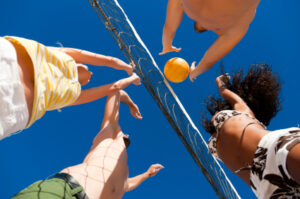 We discovered a confusing study last week that is getting a lot of air time. The study said you can’t increase your athletic performance by focusing extra energy on your core (your abdominal muscles in particular). When these headlines hit our local health club it felt as though an act of heresy had been committed.
We discovered a confusing study last week that is getting a lot of air time. The study said you can’t increase your athletic performance by focusing extra energy on your core (your abdominal muscles in particular). When these headlines hit our local health club it felt as though an act of heresy had been committed.
Cue the needle-on-vinyl-album-screech. All motion stopped and sweaty people stared, mouths agape. You could hear a sweat ball drop.
What? Crunches don’t matter? No need for that washboard stomach?
Nope. Not in terms of the quality of your athletic prowess, anyway (or your quality of life for that matter).
The “six-pack” abs are a symptom of three factors:
- low body fat (which isn’t always the best for your health, depending on how you got there)
- lots of exercise focused either at the abs specifically, or not
- genetics
It’s the “or not” verbiage to which the study speaks clearly. Research is now showing that athletes will gain strong abs, lower back and basic core muscles by default – simply by doing what they do best for their sports. In fact, they can’t do any better than that. Extra “ab” training simply doesn’t improve performance. Rather, using that time and energy for their actual sport does.
But what about “we” the common folk, dripping sweat from backyards, to home gyms, to parks, to fancy fitness centers? Does that mean we should give up the infamous “crunch” and eat bon-bons instead?
No. Body fat is body fat and will only go away if you burn it off. The more dietary fat and excess calories you add to your day, the more likely fat will cling, literally. The first place it likes to cling is in the gut where it is most accessible should you need it later in a calorie burning pinch.
The bottom line in decoding the research is this… Unless you’re actively engaged in a variety of sports or training for some competitive edge, it’s important to keep your body strong in all functional directions, thus keeping you fit for the simple sport of life. By all functional directions, we mean all the ways a body might need to move to be able to live life to its fullest — bending, squatting, stooping, reaching, twisting, lunging, swinging, dancing, jumping, skipping, you get the picture. This is the essence of the term “cross training.”

Finally, remember that muscle is muscle. When taxed, all muscles need recovery time. Treat your abdominal muscles like any other muscle group and give it a day or two between workouts.
When doing crunches, strive for just a few at a time. These are not huge muscles like your back or butt and their range of motion is limited. A little bit goes a long way as we like to say.
In health writer Tara Parker Pope’s NYT’s blog on this core issue (pun intended), Dr. Stuart McGill, a professor of spine biomechanics at the University of Waterloo in Ontario dispels an ab crunching technique myth as well:
“Don’t flatten your back into the ground,” he said. “Instead, place your hands, palm down, beneath your lower back to lessen pressure on the spine. Bend your knees, and pretend that your head and shoulders are resting on a bathroom scale,” he said. “Lift them only enough to send the imaginary scale’s reading to zero.”
Start with 7-8 and work your way to 15 repetitions, but again you only need to do them two to three times a week. Let them recover and move on to other muscle groups. Or better yet, get out there and train for a lifetime sport that will train your whole body!
See you on the non-washboard-but-strong-core PATH Ahead.